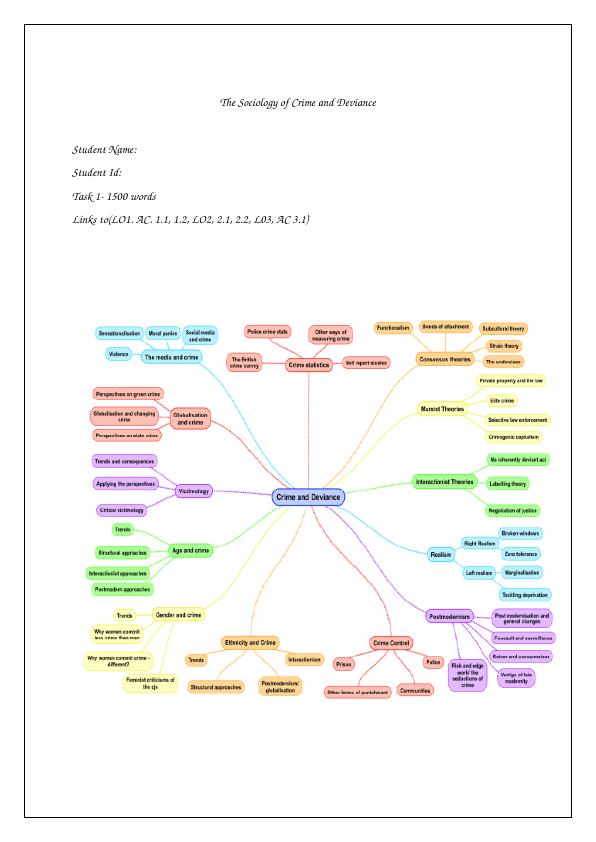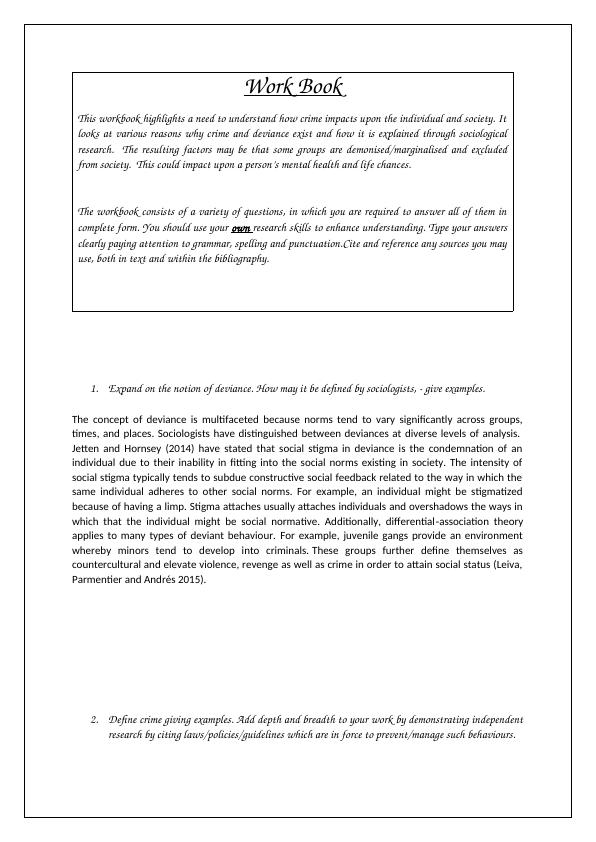The Sociology of Crime and Deviance
This workbook focuses on understanding the impact of crime on individuals and society, exploring reasons for crime and deviance, and examining sociological research. It requires independent research, clear answers, and proper citation and referencing.
7 Pages2621 Words170 Views
Added on 2023-04-24
About This Document
This workbook highlights a need to understand how crime impacts upon the individual and society. It looks at various reasons why crime and deviance exist and how it is explained through sociological research.
The Sociology of Crime and Deviance
This workbook focuses on understanding the impact of crime on individuals and society, exploring reasons for crime and deviance, and examining sociological research. It requires independent research, clear answers, and proper citation and referencing.
Added on 2023-04-24
ShareRelated Documents
End of preview
Want to access all the pages? Upload your documents or become a member.
Deviant Behaviour: Definition, Changes, and Societal Views
|4
|818
|90
Sociological Theories of Criminal Behavior Assignment 2022
|8
|2025
|32
Assignment about What is Criminology?
|8
|2253
|16
Does criminal labelling encourage criminal behaviour?
|6
|1930
|96



